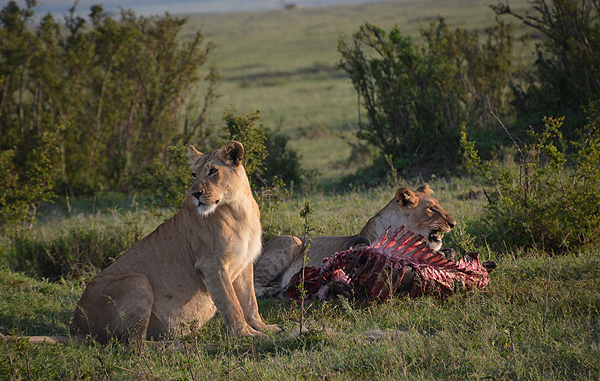
Covid is having a remarkable, somewhat complex effect on wildlife in sub-Saharan Africa. On the one hand the lack of tourists has given rise to a predicted surge in animal populations. On the other hand this has reduced poaching!
This is exactly the opposite of what was first reported and what a lot of sensational media tried to promulgate.
Early on in the pandemic there were widespread reports of increased poaching. Several sensational stories circulated worldwide, including the BBC report of the unusual white giraffes in Kenya’s north being poached.
National Geographic, a once respected conservation organization, published numerous reports of widespread poaching.
Poaching will never stop but I was seriously skeptical that these reports represented much more than one-off events. The fact is that in the last decade or so poaching has come under notable control.
With time we now know definitively that poaching hasn’t increased during the pandemic. In fact, it’s decreased substantially, further evience that the once exemplary organizations like National Geographic are joining the ranks of the tabloids and conspiracy theorists.
As early as February real scientific studies showed that poaching was slowing. The most critically poached animal is the rhino, and in February South African scientists had documented reduced poaching precisely because of the pandemic.
By the end of the year these reports were corroborated by South Africa’s Department of Environmental Affairs.
Similar studies show this is true throughout most of sub-Saharan Africa among all wild animals. And it’s precisely because of the pandemic.
The mitigation efforts of social distancing and mask wearing and just the heightened individual awareness caused by the pandemic combined with a lack of any tourism is the main explanation.
Tourism in Africa habituates animals. They get use to vehicles and people very quickly. This isn’t natural, and instinct rushes back the moment people and vehicles subside.
The absence of omnipresent observers, their cacophony of human sounds and smells reduces wild animals’ tolerances for humans, their vehicles and movements.
Normal tourism peaks and craters with the travel periods linked mostly to European social behavior. So July, August and the end of the year are high seasons throughout all of Africa, even though that might not be the optimum time to visit those places. This the preferred time for European holiday travel.
And May and November are the opposite, when most typical safari tourists are busy at home with work and traditional stay-at-home holidays, even though this may represent some of the best times to visit the wilderness.
So in a normal year poachers are at their busiest during May and November, taking advantage of the habituation that high tourism has just created for them.
There’s another significant reason why poaching declined during the pandemic. Lockdowns. The mitigation efforts mandated by governments like Kenya and South Africa were severe, including curfews that were aggressively enforced.
Don’t get the idea that this means poaching is over for good. Quite to the contrary, the end of the pandemic is likely to see a surge in poaching that follows the surge in pent-up tourism.
But the importance of studying the data and listening to the truth, rather than extrapolating trends from a single, anecdotal report of the sort NatGeo promulgated is essential for understanding and then dealing with the serious problem of poaching.
Hopefully we’ve made the right turn in society. Hopefully we’re putting truth before rumor and sensationalism. Hopefully that will put us on the right track for long-term solutions. More on this next week.